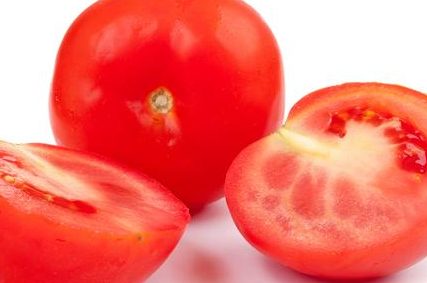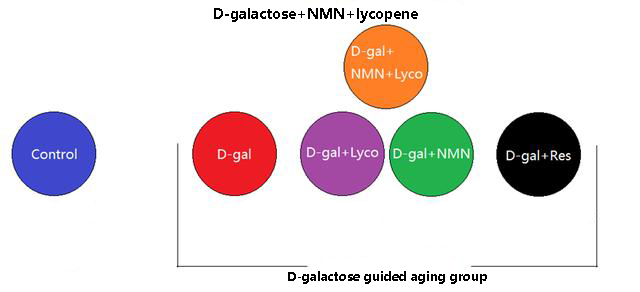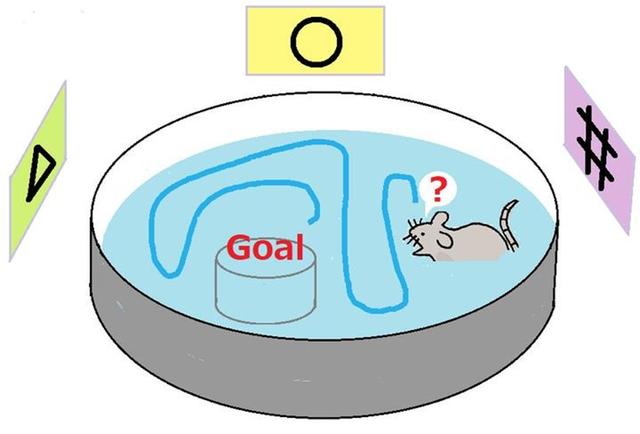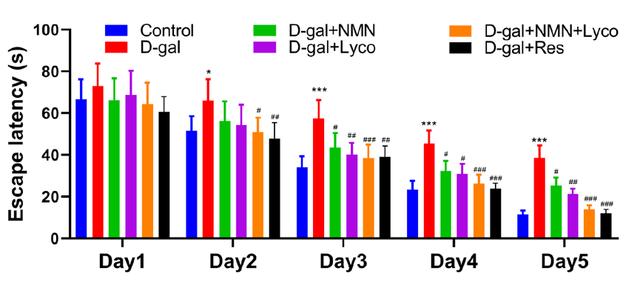Chinese scientist: The combination of NMN and lycopene can improve cognitive impairment in old age rats
Why do tomatoes in supermarkets look bright red now but taste bland and tasteless?
This is because the breeders intentionally screened the genes of tomatoes, which not only allowed them to grow faster and be more tolerant to storage, but also allowed them to produce sufficient lycopene, attracting consumers with their beautiful appearance.
Unfortunately, the genes for producing flavor substances were partially lost during the breeding process.

However, scientific research has found that lycopene, which is abundant in tomatoes today, is not just a substance that is not useful, but a substance with anti-aging potential.
This study was published by Chinese scientists in the journal Gene in February 2022.
The test subjects in the experiment young rats aged 6-8 weeks, who randomly divided into 6 groups. In addition to one control group, the remaining 5 “aging groups” injected with a large amount (100mg/kg) of D-galactose (D-gal) daily by the researchers.
This can lead to excessive accumulation of reactive oxygen species (ROS) in rats, leading to a series of aging symptoms including cognitive and behavioral deficits.
At the same time, four of the “aging groups” also inputted with functional ingredients, including lycopene, to test whether these ingredients can “offset” the aging effects caused by D-galactose.
After 8 weeks of experimental treatment, these rats will undergo various tests to evaluate their aging status.

To test the spatial cognitive ability of rats, researchers used an experimental device called the Morris Water Maze. Its main body is a circular water tank with a diameter of 1m, which is deep enough to submerge the rats to tested.
Due to the instinct of rodents to escape the water environment, once rats placed in the water,
they will constantly search for safe footholds, and the platform installed 1.5cm below the water surface by researchers exactly the target that “soup rats” are looking for.

In order to facilitate the positioning of underwater platforms by rats,
researchers will attach stickers of different colors and shapes to the inner walls of the pool. After the experiment started, the rat placed on the platform and had 10 seconds to familiarize and remember the position of the platform.
Afterwards, researchers will place the rats in a wall facing posture into the water. Driven by instinct, rats will constantly search for the position of the platform in the pool. Rats with shorter time use have better spatial cognition and memory abilities, which means they are “younger”.
In order to prevent rats from taking shortcuts and seeing the location of the platform at a glance through the water surface,
cunning human researchers would mix the water with non-toxic dyes such as milk powder or ink beforehand,
leaving rats to rely on the clues provided by stickers.
After 5 consecutive days of learning and testing,
researchers found that lycopene can indeed reduce the impact of aging on spatial cognitive ability in rats,
and the combination of lycopene and NMN (nicotinamide mononucleotide) has a better effect. This group of rats found the platform in a time similar to that of healthy rats.

Further research has found that under the combined action of lycopene and NMN,
oxidative damage in the brains of aging rats reduced, allowing them to retain their “youthful” spatial cognitive abilities.
In addition, researchers also found that the combined effect of lycopene and NMN is not entirely dependent on the Keap1-Nrf2 pathway,
and the underlying mechanism of action remains to elucidated.
Although lycopene in tomatoes has the potential for antioxidant and anti-aging properties, why can’t fish and bear paws have both?
I hope that modern tomato breeders can retrieve the tomato genes that produce flavor substances,
so that the tomatoes on the market are not only beautiful and delicious, but also delicious.
Reference:
Liu, X., Dilxat, T., Shi, Q., Qiu, T., & Lin, J. (2022). The combination of nicotinamide mononucleotide and lycopene prevents cognitive impairment and attenuates oxidative damage in D-galactose induced aging models via Keap1-Nrf2 signaling. Gene, 822, 146348. https://doi.org/10.1016/j.gene.2022.146348
